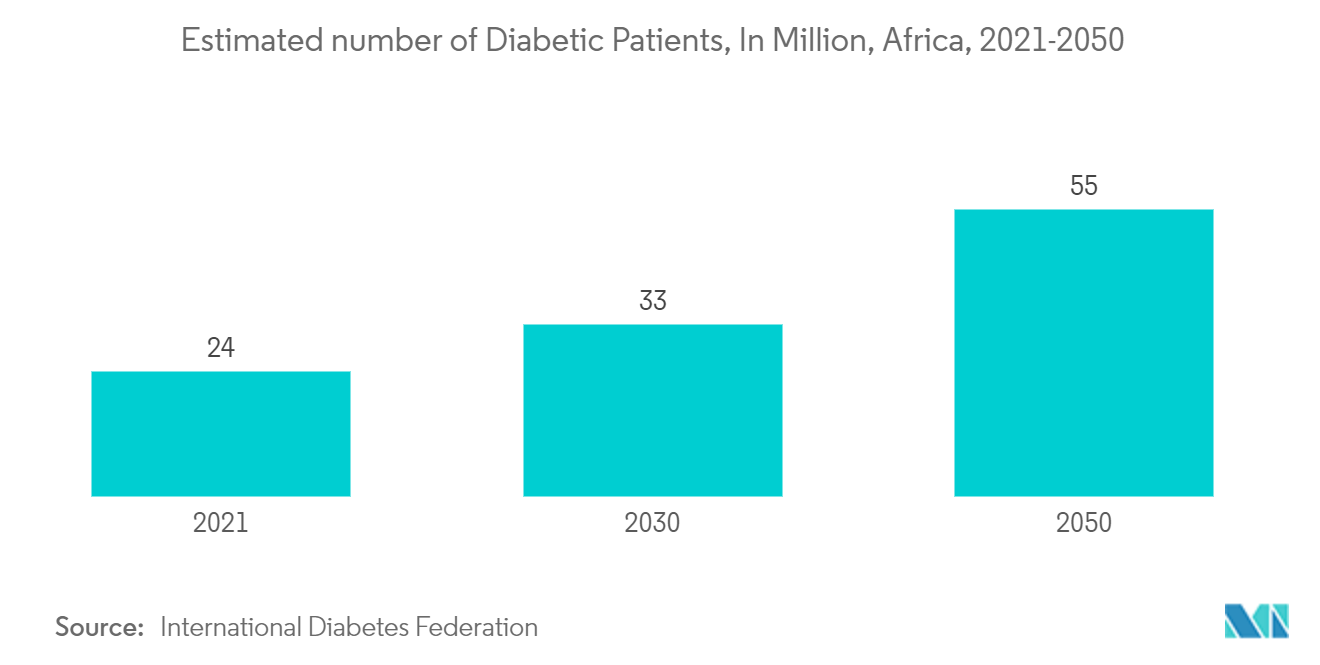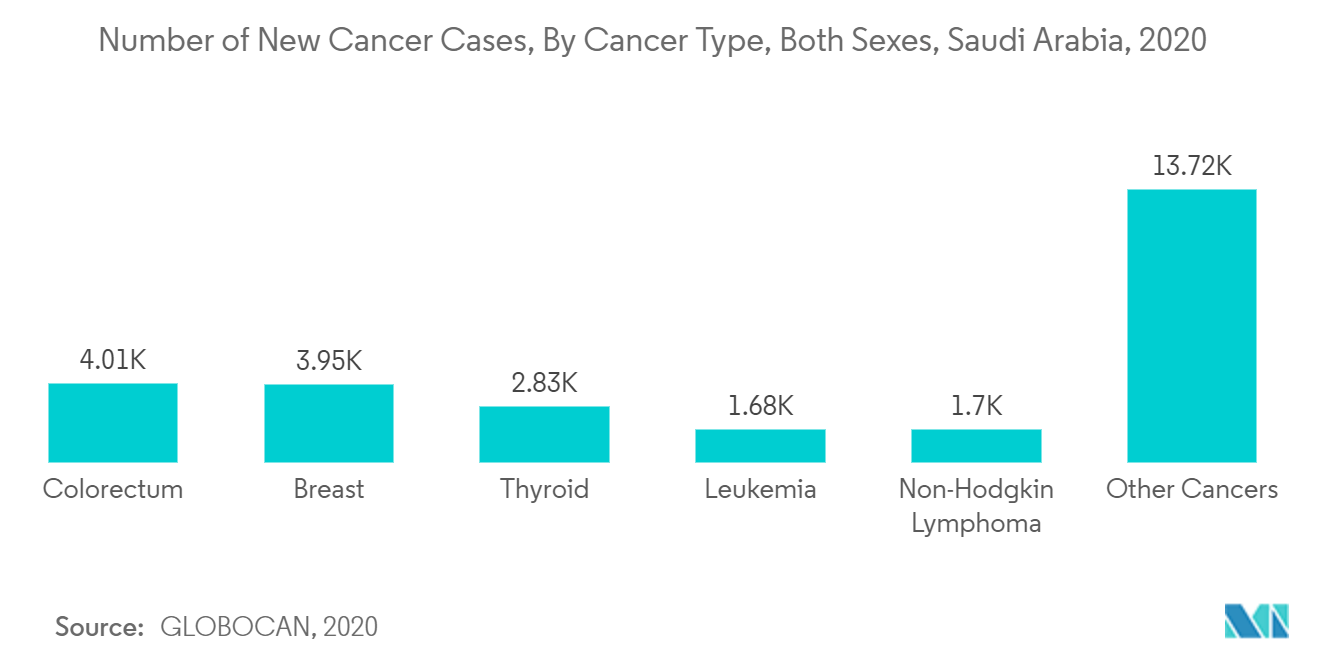Market Trends of Middle East and Africa In-Vitro Diagnostics Industry
This section covers the major market trends shaping the MEA In-Vitro Diagnostics Market according to our research experts:
Diabetes Segment is Expected to Register High CAGR in the Application Segment
During the forecast period, the diabetes segment is expected to witness healthy growth. Factors such as the growing burden of diabetes, the increasing diagnosis of diabetes, and rising technological advancements in the field of diabetes are the main growth drivers of this segment.
For instance, as per the 2021 report from the African Union Development Agency (AUDA-NEPAD), the African High-Level Panel on Innovation and Emerging Technology (APET) was urging African nations to implement medical management technologies to enhance diabetic healthcare and lessen the burden of the condition. The strain of frequent hospital visits was lessened by the availability of more convenient and accessible healthcare solutions, which were supported by medical management technologies. Furthermore, according to the IDF Diabetes Atlas, 10th edition, published in 2021, an estimated 24 million adults aged 20-79 years were living with diabetes in the IDF Africa region, representing a regional prevalence of 4.5%. Moreover, 54% of people living with diabetes in the region are undiagnosed, the highest proportion of all IDF regions.
The IDF estimates that the increase in diabetes will be 33 million by 2030 and 55 million by 2045. This raises massive healthcare concerns, as all African countries are already struggling to cope with the diabetes burden. However, the WHO reports that diabetes in the region is a serious, chronic, and costly disease that is estimated to rise to 23.9 million cases by 2030.
Hence, the rising prevalence of the disease is expected to drive the growth of the diabetes segment over the forecast period.

GCC Region is Expected to Witness Growth Over The Forecast Period
The GCC in-vitro diagnostics market is expected to grow over the analysis period owing to the growing burden of chronic diseases and increasing healthcare expenditure, which is actively affecting the growth of the market.
The Kingdom of Saudi Arabia made a USD 150 million donations to Gavi, the Vaccine Alliance, in April 2020 to help in the organization's response to the COVID-19 pandemic. The funding was part of a USD 500 million package from the Kingdom of Saudi Arabia to support response to emergencies and preparedness efforts, the deployment of innovative diagnostics, treatments, and vaccinations, and the maintenance of adequate supplies of protective equipment for medical personnel. The government's actions during the pandemic were anticipated to boost the market growth.
Additionally, the COVID-19 pandemic in the GCC region helped the in-vitro diagnostics market grow. For instance, according to a study published in the Cardiovascular Diabetology Journal in December 2020, diabetes mellitus (DM) was the most common comorbidity among COVID-19-positive patients, with prevalence rates of 68.3%, hypertension of 42.6%, and obesity of 42.2%. Patients with COVID-19 who were hospitalized at King Khaled University Hospital (KKUH), Riyadh, Saudi Arabia, had a high prevalence of DM. The demand for in-vitro diagnostics among the patient population was increased by the high prevalence of COVID-19 patients and diabetes mellitus patients.
Moreover, in July 2022, Saudi Arabia's Arabian International Healthcare Holding Company, TIBBIYAH, commenced a new joint venture (JV) with the Swiss company Unilabs Diagnostics AB. Likewise, in April 2022, the United Arab Emirates Sheikh Shakhbout Medical City (SSMC) became one of the first hospitals in the Middle East to launch a prominent point-of-care tool for antimicrobial management.
Therefore, owing to the aforementioned factors, it is anticipated that the studied market will witness growth over the analysis period.


